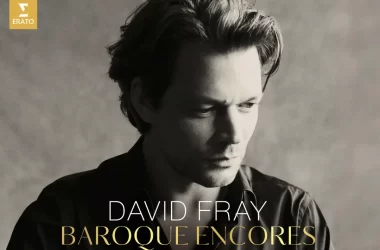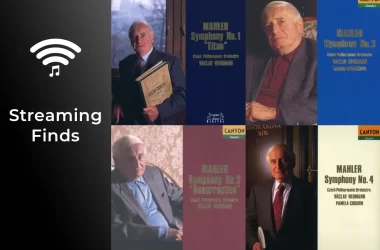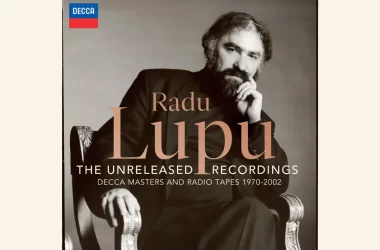Having recorded the complete Beethoven sonatas for the Orchid label, Jonathan Biss now embarks on a journey through the piano concerti with David Afkham and the Swedish Radio Symphony. This “Beethoven 5” project will pair each concerto with a commissioned contemporary work, and seems a creative way for Biss to share his personal vision on this oft-played and recorded cycle.

The opening of the first movement is critical to capturing the concerto’s regal essence, and I longed for more pomp and circumstance here; But the following orchestral interlude gets back on track. Sound balance between instruments is good and the timpani thwacks add vigor. There is also a lovely transparency in the Swedish Radio Orchestra’s playing that allows us to hear Beethoven’s layers of instrumentation.
Biss’ playing seem to echo this qualities in his own playing style. This works well when both performers are involved, as it allows each part to be clearly heard. However, these same qualities can become a drawback at times, like at the 6’59” mark, where the thin texture makes the music sound a bit jittery.
While the opening theme of the Adagio (track 2) shouldn’t be overly sentimental, some listeners might find this interpretation a touch matter-of-fact compared to the more lyrical approach taken by Michelangeli/Giulini or the profound WDR players under Wänd/Gilels. It’s fortunate that Biss picks up the slack in his own part, and beautifully so. The slow movement were a highlight of his sonatas cycle and so is the case here: his phrases are fluid yet imbued with the transcendence that has been so wanting earlier.
The Rondo (track 3) fares considerably better—it is perhaps in this movement more than the others that we hear just how much the performers are enjoying the music. Not only do they add a delightful swing to the triple meter, but they also respond sensitively to the many color changes that Beethoven incorporates throughout.
Brett Dean’s Piano Concerto (“A Winter’s Journey”) stands in stark contrast to Beethoven’s Emperor Concerto, despite incorporating direct quotes from it. According to Dean’s own commentary, the connection lies in exploring Beethoven’s mental state during his final years, grappling with personal struggles. In this pursuit, Dean’s concerto proves quite effective.
The opening movement swings wildly between frenetic energy and eerie disquiet. Pianist Jonathan Biss’s relentless runs capture a harrowing sense of entanglement and panic. While technically demanding for all performers, both orchestra and soloist convincingly convey these unsettling and tempestuous moods.
The second movement delves deeper into the psyche, with Dean masterfully manipulating and juxtaposing harmonies to create a dissonant and disorienting soundscape, expressing the subtleties of suffering. The perpetuum mobile motif returns with a vengeance in the finale, this time spiraling into sheer madness. Yet, until this point, Biss maintains admirable control over his fingerwork and tempo, making the descent into chaos all the more convincing.
The live nature of this recording doesn’t excuse some shortcomings in the sound engineering, particularly for Beethoven’s concerto. The piano’s bass is overly prominent, and the high notes are bright, bordering on harsh. Interestingly, this sonic quality becomes an asset for Dean’s concerto, aligning with its troubled character. Despite these shortcomings, this release leaves one anticipating the next installments of the cycle, featuring the remaining Beethoven concertos paired with their contemporary counterparts.
Image: ©️ Benjamin Ealovega

Album Details |
|
|---|---|
| Album name | Beethoven 5, Vol. 1 |
| Artist | Jonathan Biss – Piano |
| Artist | Swedish Radio Symphony Orchestra |
| Artist | David Afkham – Conductor |
| Label | Orchid Classics |
| Catalogue No. | ORC100291 |
Included with an Apple Music subscription:
Available on Presto Music
Latest Classical Music Posts




















